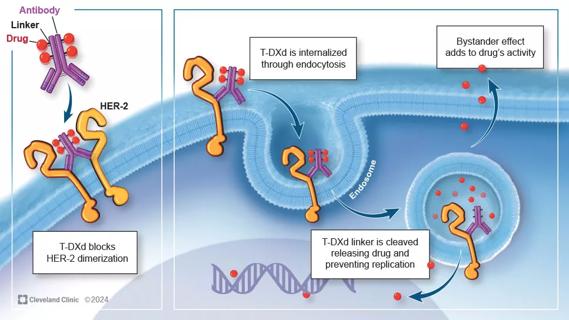Study affirms the need for prevention and monitoring

Survivors of childhood leukemia and lymphoma are at an increased risk of reduced bone mineral density (BMD), due in part to treatment with bone-toxic therapies at a time of life when more than 90 percent of peak bone mass develops. Other factors influencing BMD in this population may be lack of weight-bearing activity, nutritional deficiencies and endocrinopathies.
Advertisement
Cleveland Clinic is a non-profit academic medical center. Advertising on our site helps support our mission. We do not endorse non-Cleveland Clinic products or services. Policy
An estimated 45% of childhood cancer survivors have a BMD that is more than 1 SD below norms but estimates vary widely. Evidence is also limited on the association of reduced BMD with fractures.
“Reduced bone mineral density is a problem for some of our lymphoma and leukemia patients but we haven’t known the full extent of the problem,” says Seth Rotz, MD, a pediatric hematologist and oncologist at the Department of Pediatric Hematology Oncology and Blood and Marrow Transplantation at Cleveland Clinic.
The Department of Pediatrics at Yale School of Medicine and Seattle Children’s Hospital conducted a study to determine the frequency of BMD in cancer survivors, factors associated with its development and the association of reduced BMD with fractures. “The better we understand bone mineral density in survivors of leukemia and lymphoma, the more we can do to prevent bone loss and improve their quality of life,” says Ilia Buhtoiarov, MD, a pediatric hematologist and oncologist at the Department of Pediatric Hematology Oncology and Blood and Marrow Transplantation at Cleveland Clinic.
The study included patients who attended the childhood cancer survivorship clinics at Yale New-Haven Hospital and Seattle Children’s Hospital from 2004 to 2016 for routine surveillance according to Children’s Oncology Group (COG) guidelines. All participants were screened for bone density with dual-energy x-ray absorptiometry (DXA), adjusting for height using pediatric reference data.
Of the 542 patients included in the study, 46% were diagnosed at age four or younger and slightly more than half – 51.5% – were female. The majority of patients – 65% – were diagnosed with acute lymphoblastic leukemia (ALL) and the most common treatment was any type of dexamethasone. The median age of patients at the time of evaluation was 15.5 and they were a median of six years post therapy.
Advertisement
Among participants, 17.2% had low lumbar spine BMD and 3.5% had very low BMD. There was considerable variability among sub-groups: 10.8% of survivors who were 15 to 19 years at diagnosis had very low BMD. In multivariable analyses, older age at diagnosis, white race and being underweight were significantly associated with low BMD.
Fracture history was available for patients up to 35 years following therapy. Of the cohort, 116 patients reported one or more post-therapy non-digit fracture: 66 with fractures in upper extremity long bones and 29 with fractures in lower extremity long bones. Twenty-five patients had multiple fractures, including 16 with two fractures and nine with more than three fractures. The mean BMD was significantly lower for those who had one or more non-digit fractures than those who had no fractures; the risk of non-digit post-therapy fracture was higher for patients with low BMD than those without it. “It’s helpful to have data that ties together fracture risk with bone density,” says Dr. Rotz.
The study didn’t find that dexamethasone increased the risk of reduced BMD. “We knew that dexamethasone was associated with some bone issues, including osteonecrosis. This study suggests that dexamethasone is not associated with reduced bone mineral density. That is a major revelation,” says Dr. Buhtoiarov.
The association of BMD with older age at diagnosis can help clinicians with post-treatment monitoring. “Lymphomas are more prevalent than leukemia in older patients. Lymphoma patients will require closer evaluation than patients with leukemia,” says Dr. Buhtoiarov.
Advertisement
That includes DXA scanning. “We need to make sure that we screen teenage patients for bone density a year following treatment,” says Dr. Rotz.
The study didn’t look at whether patients’ vitamin D levels affect bone density. At Cleveland Clinic, all pediatric lymphoma and leukemia patients have their vitamin D levels tested during treatment and receive supplementation. “It would be useful to study whether vitamin D supplementation can improve bone health and mitigate reduced bone mineral density and compare its effects on patients at different ages. It’s time to explore if a very simple preventive measure can affect outcomes,” says Dr. Buhtoiarov.
Another area to study is medication: “We should investigate bisphosphonates as a potential treatment for low bone density in these patients,” says Dr. Rotz.
Advertisement
Advertisement

First-of-its-kind research investigates the viability of standard screening to reduce the burden of late-stage cancer diagnoses

Global R&D efforts expanding first-line and relapse therapy options for patients

Study demonstrates ability to reduce patients’ reliance on phlebotomies to stabilize hematocrit levels

A case study on the value of access to novel therapies through clinical trials

Findings highlight an association between obesity and an increased incidence of moderate-severe disease

Cleveland Clinic Cancer Institute takes multi-faceted approach to increasing clinical trial access 23456

Key learnings from DESTINY trials

Overall survival in patients treated since 2008 is nearly 20% higher than in earlier patients